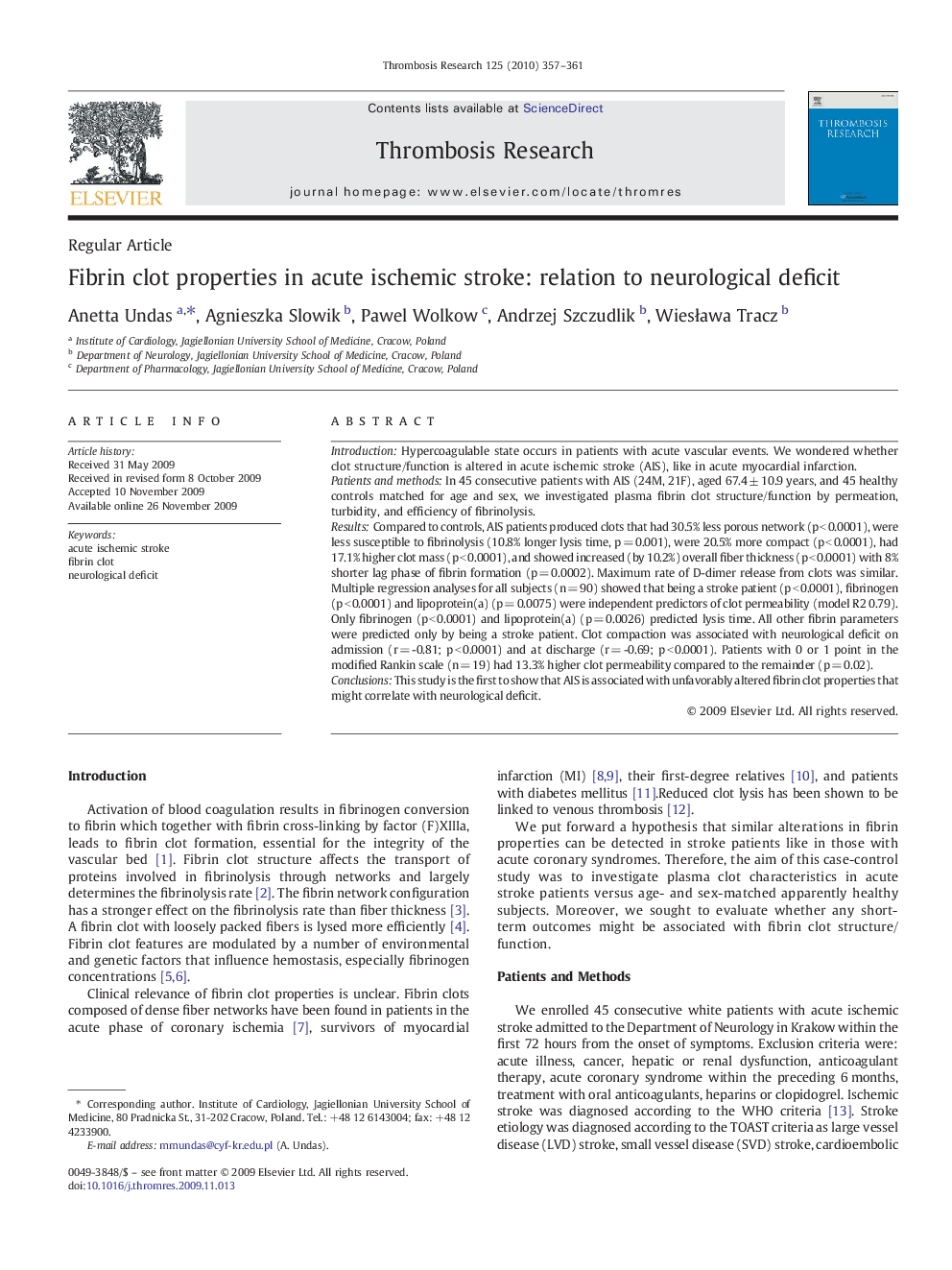| Article ID | Journal | Published Year | Pages | File Type |
|---|---|---|---|---|
| 3027903 | Thrombosis Research | 2010 | 5 Pages |
IntroductionHypercoagulable state occurs in patients with acute vascular events. We wondered whether clot structure/function is altered in acute ischemic stroke (AIS), like in acute myocardial infarction.Patients and methodsIn 45 consecutive patients with AIS (24M, 21F), aged 67.4 ± 10.9 years, and 45 healthy controls matched for age and sex, we investigated plasma fibrin clot structure/function by permeation, turbidity, and efficiency of fibrinolysis.ResultsCompared to controls, AIS patients produced clots that had 30.5% less porous network (p < 0.0001), were less susceptible to fibrinolysis (10.8% longer lysis time, p = 0.001), were 20.5% more compact (p < 0.0001), had 17.1% higher clot mass (p < 0.0001), and showed increased (by 10.2%) overall fiber thickness (p < 0.0001) with 8% shorter lag phase of fibrin formation (p = 0.0002). Maximum rate of D-dimer release from clots was similar. Multiple regression analyses for all subjects (n = 90) showed that being a stroke patient (p < 0.0001), fibrinogen (p < 0.0001) and lipoprotein(a) (p = 0.0075) were independent predictors of clot permeability (model R2 0.79). Only fibrinogen (p < 0.0001) and lipoprotein(a) (p = 0.0026) predicted lysis time. All other fibrin parameters were predicted only by being a stroke patient. Clot compaction was associated with neurological deficit on admission (r = -0.81; p < 0.0001) and at discharge (r = -0.69; p < 0.0001). Patients with 0 or 1 point in the modified Rankin scale (n = 19) had 13.3% higher clot permeability compared to the remainder (p = 0.02).ConclusionsThis study is the first to show that AIS is associated with unfavorably altered fibrin clot properties that might correlate with neurological deficit.
